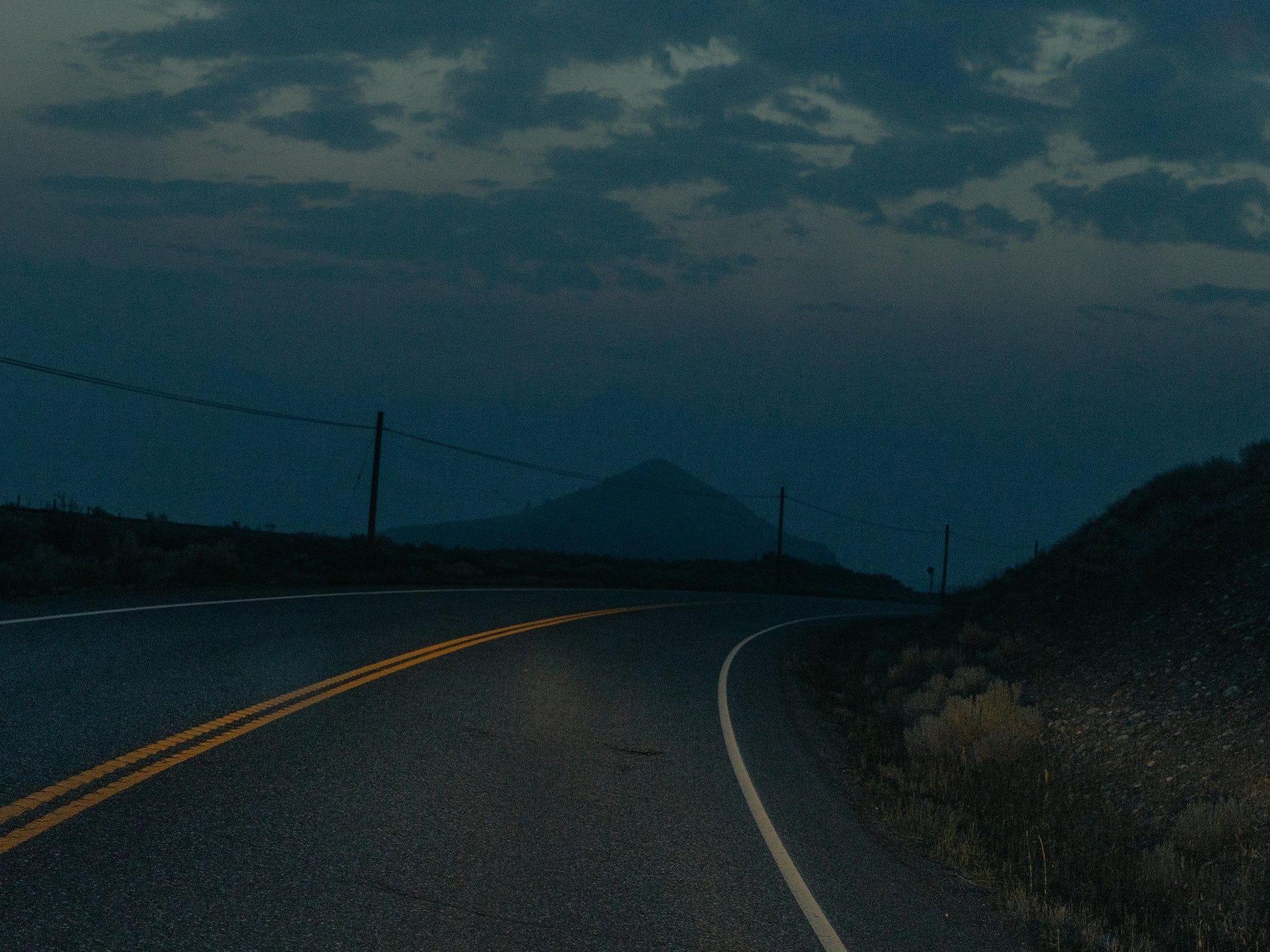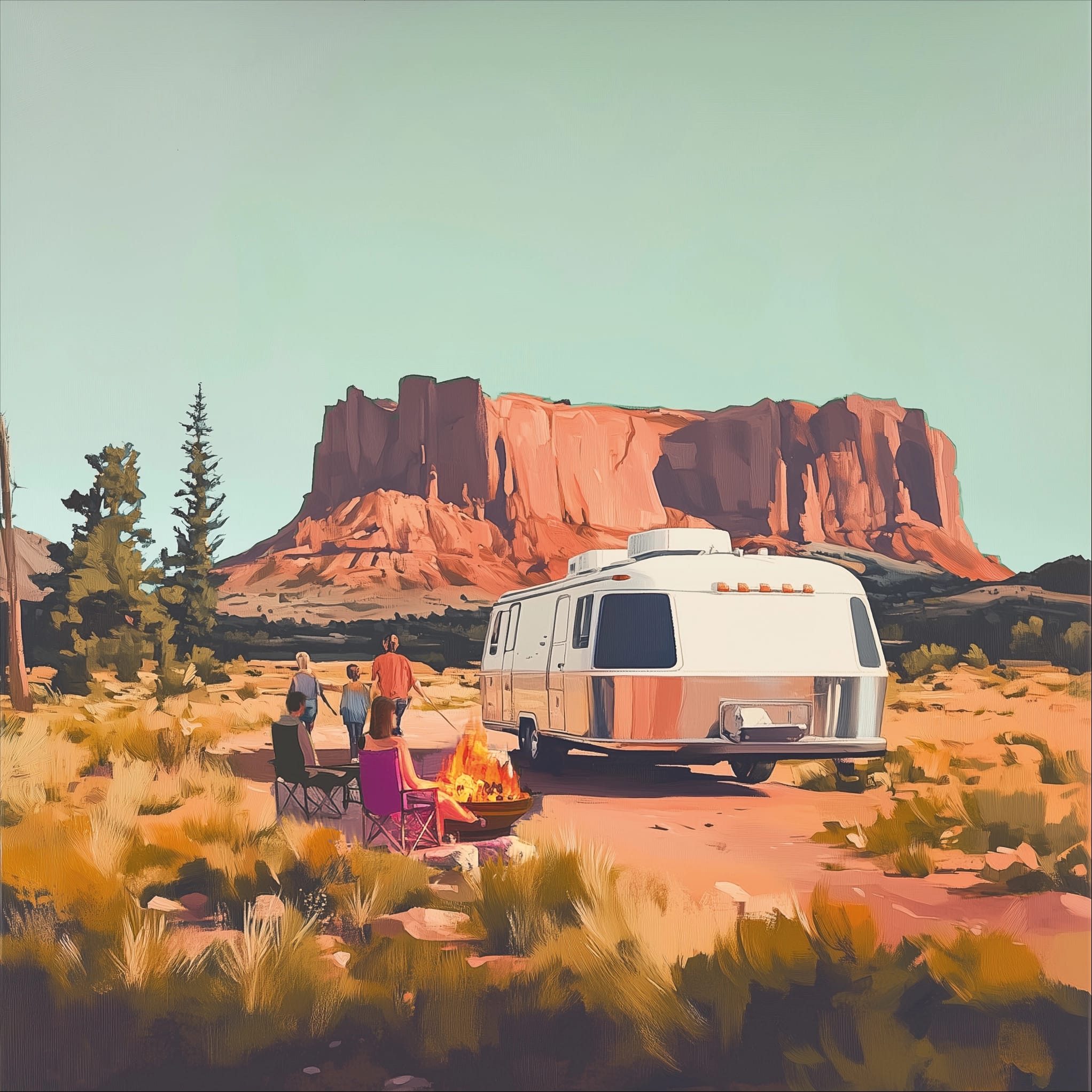Why Sailing is the Next Great American Pastime
And why the coast of Maine is the place to sail.
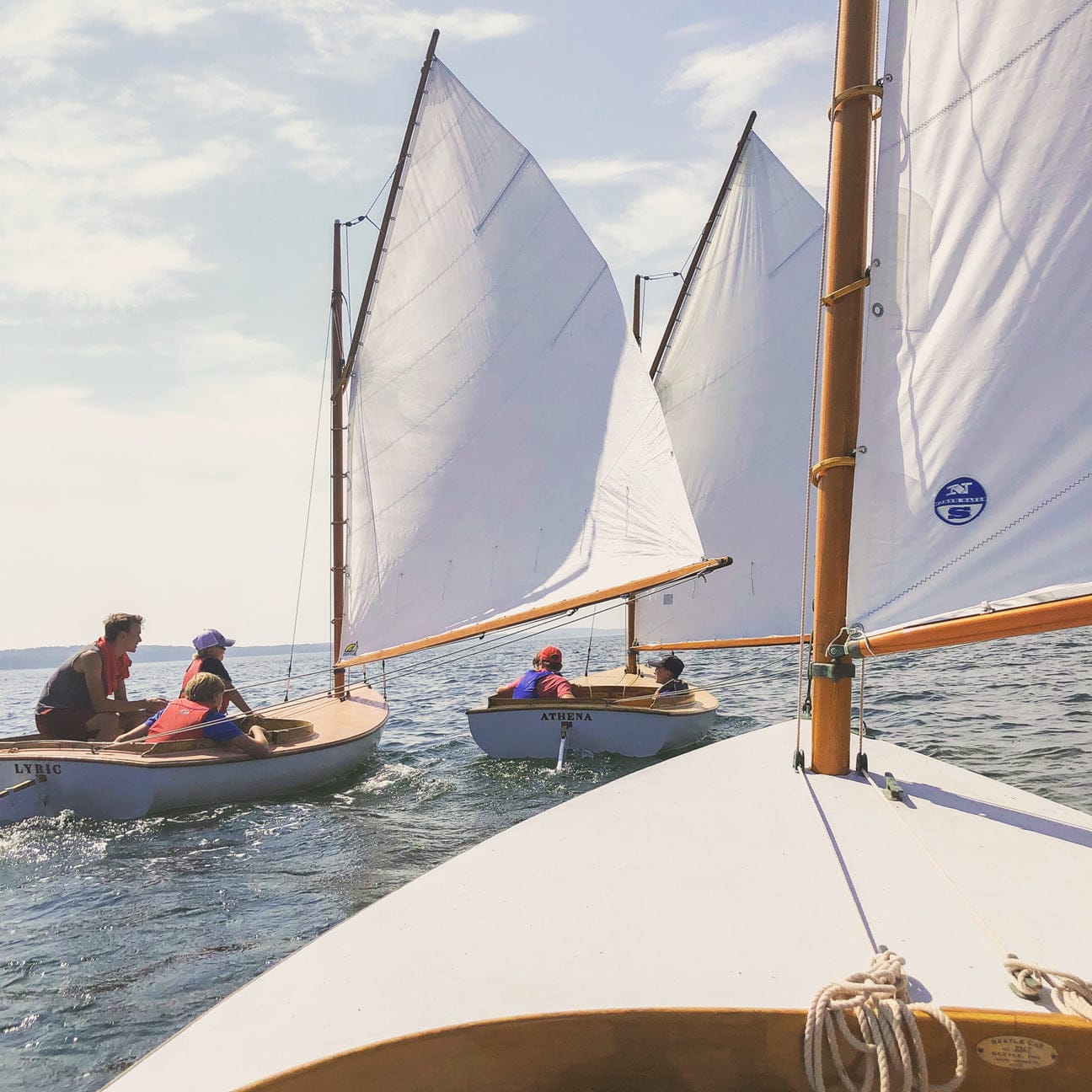
I live in Brooklin, Maine. Downeast wryness is prized here, which may suggest some context for the road sign just inside our town line proclaiming Brooklin [pop. 1800] “The Boatbuilding Capital of the World.” There certainly is a local tradition, stretching back a couple of hundred years, of building fishing boats and coastal schooners. And people come to Brooklin from all over the world to learn boat-building skills and the fundamentals of sailing at The WoodenBoat School, out on Naskeag Road. The Brooklin Boatyard, in Center Harbor, and several other world-class boatbuilders on our peninsula pay their respects to the local traditions while turning out astoundingly sleek modern sailboats.
Moreover, Brooklin is a sailing town. Brooklin is salty. But when I first came here, I didn’t know anything about sailing, or boats. Then I met Basha Burwell, when she sailed a 32’ sloop into Center Harbor and picked up a mooring for the night. She was skipper, her mother was first mate. They were out of Northeast Harbor and headed for Camden. One year later, in our first committed endeavor as a couple, Basha and I acquired a mooring of our own. The following year we got married out on Flye Point. And the year after that we bought a sailboat—a Cape Dory 25—to put on the mooring.
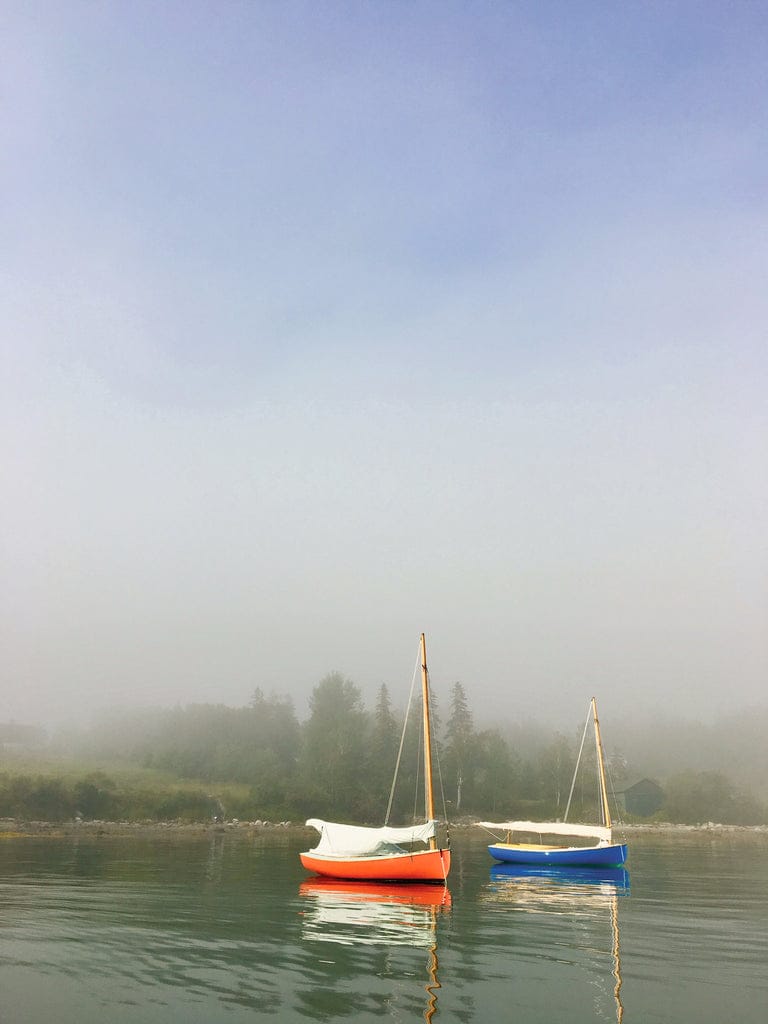
Sailing blew my life open, in the best possible way. And while neither Brooklin, nor sailing, nor I have ever been much interested in current trends, I sense that sailing is approaching a “moment,” ripe for rediscovery by a new generation.
Maybe part of the reason is that so many great sailboats are going cheap right now. Last month I saw another CD 25 listed for sale here in Maine for something less than the bluebook price of that 200k+ mileage Subaru with serious rust issues you donated to NPR. Millennials have not discovered sailing yet. It will happen. Maybe to you. It could not happen in a better place than on the downeast coast of Maine
What you want is a sailboat, not to be confused with the oligarchical yacht. Sailing is fun. Sailing can be, but does not have to be, crazy expensive. There are few human endeavors so gracefully tuned to the natural world. Small boat sailing isn’t about conquering anything. It’s about being intensely present, whether you’re sailing a Laser on a lake in northwest Iowa, a Hobie Cat in the Santa Barbara Channel, or a 12 ½ here on Eggemoggin Reach.
It’s a good idea to acquire the elements of seamanship, and some experience on different types of boats, before you start looking for your own. Sailing can seem like a foreign language at first. Not just the weird vocabulary–port, starboard, heeling, making off, etc. The whole endeavor. The classic primer to get you past the utterly-bewildered phase is The Craft of Sail by Jan Adkins, which is illustrated, readable, and wise.
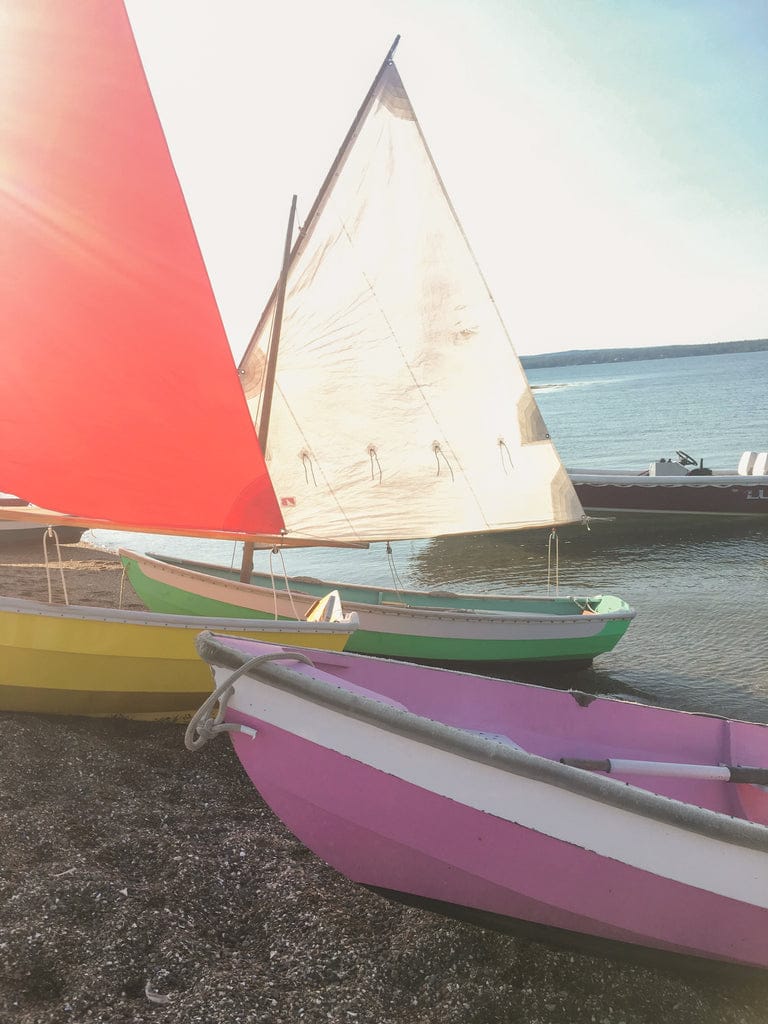
Learning to sail is not that difficult but does demand a set of skills you’ll spend the rest of your life getting better at. The WoodenBoat School offers week-long classes called Elements of Sailing that are focused on the skillful handling of small craft and on building your confidence in your own abilities. Their classroom, out on Eggemoggin Reach, is a fleet of Herreshoff and Haven 12 ½–classic wooden daysailers.
Nothing afloat quite matches the aesthetic rightness of the wooden sailboat. The Beetle Cat is maybe the smallest and most characterful–ornery?–type of wooden daysailer in Brooklin’s Center Harbor. The Beetles are an American One-Design sailboat, first built in 1921. (‘One-design’ means a class of boats built to identical specs so that racing them is, in theory, about skilled seamanship, not about whose boat has the newest, fastest, tech-iest whatever.) Beetle Cats are a smaller adaptation of the classic Cape Cod catboat, originally designed for fishing in shallow waters. Beetles are loveable, cranky and wooden, which means they require a lot of maintenance. Word is, if you learn how to sail on a Beetle, you can sail just about any small boat there is.
Ever considered joining a yacht club? Of course you haven’t. Maybe you should. Yacht clubs can be more democratic than name and stereotype suggest. Some are irrepressibly snooty, their membership directories stuffed with pedigreed, harrumphing males in blazers, pink Bermuda shorts and sockless Topsiders. But in our Maine, anyway, there are yacht clubs and sailing clubs that are small convivial gatherings of local folks who share a common interest in sailing and racing and helping each other out. All small boat sailing is local, and the local club is an authoritative–if strongly opinionated–source of reliable intel on local sailing conditions and traditions, mooring availability and which boat types suit their own piece of ocean, bay, channel or lake. It makes sense to investigate the local YC. You’ll know right away if the vibe is welcoming or not. Some clubs offer learn-to-sail classes open to people in the local community who aren’t members yet.
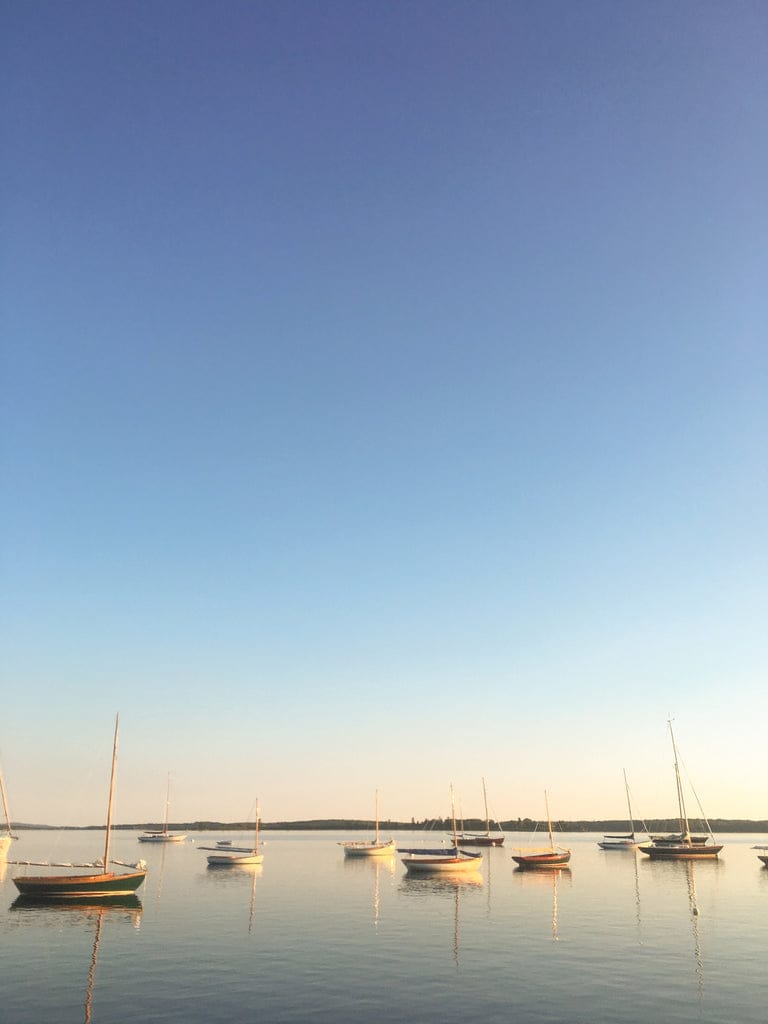
In his The Compleat Cruiser, America’s greatest designer of wooden sailboats, L. Francis Herreshoff, noted that "simplicity afloat is the surest guarantee of happiness." The classic wooden daysailer in our Maine is the Herreshoff 12 ½, designed by L. Francis’s father, Nathaniel Greene Herreshoff, in 1914, and possibly the best small boat design ever. There’s something essential about a 12 ½. And they probably look very, very close to the sailboats you drew at age six.
A 12 ½ is simplicity afloat.
Wooden boats need to get wet to stay supple and seaworthy. Ashore too long, out of their element, they parch. Planking crackles and shrinks. Caulking withers. Hulls get leaky and wizened. A wooden boat ashore one season too many is not a happy ship and will, before long, be a collation of scrap lumber and rusted fastenings.
Fiberglass is the alternative, and the Bullseye–another safe, sturdy full-keel daysailer– is close to being the fiberglass edition of a Herreshoff 12 ½ , and much easier to maintain.
Beetles, 12 ½’s and Bullseyes are the classic daysailers on Eggemoggin Reach and priced accordingly–if you can find one. But there happen to be plenty of other reliable, handsome used daysailers and small cruising sailboats on the market right now at knockdown prices. Scout, our Cape Dory 25, is a nimble cruising sailboat with classic lines that two people can sleep aboard in more-or-less comfort. Basha and Scout taught me how to sail, and we sail her all over Penobscot Bay.
About the author
PETER BEHRENS is a Canadian-American novelist, essayist and short-story writer. His novel The Law of Dreams won the Governor General’s Award for English fiction. He contributed an original essay to Wildsam's guide to Big Bend National Park.
PETER BEHRENS is a Canadian-American novelist, essayist and short-story writer. His novel The Law of Dreams won the Governor General’s Award for English fiction. He contributed an original essay to Wildsam's guide to Big Bend National Park.
Read more like this

